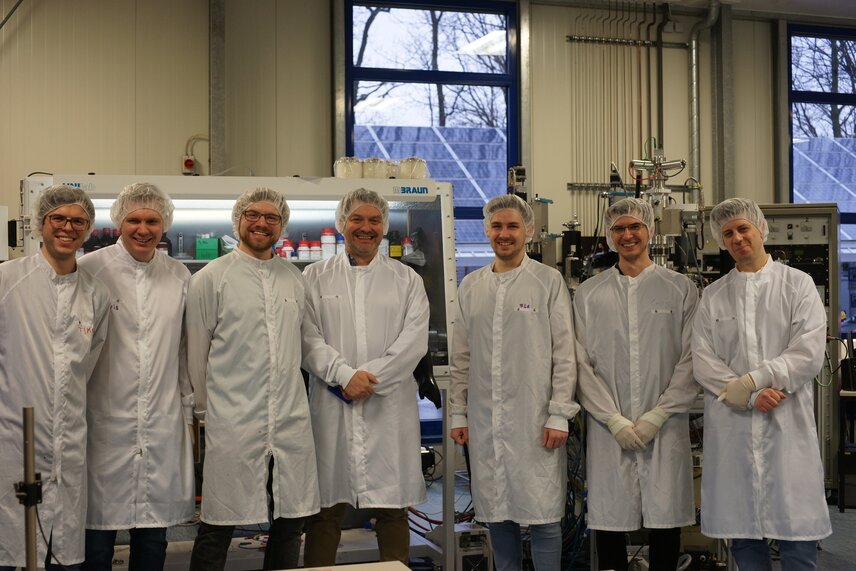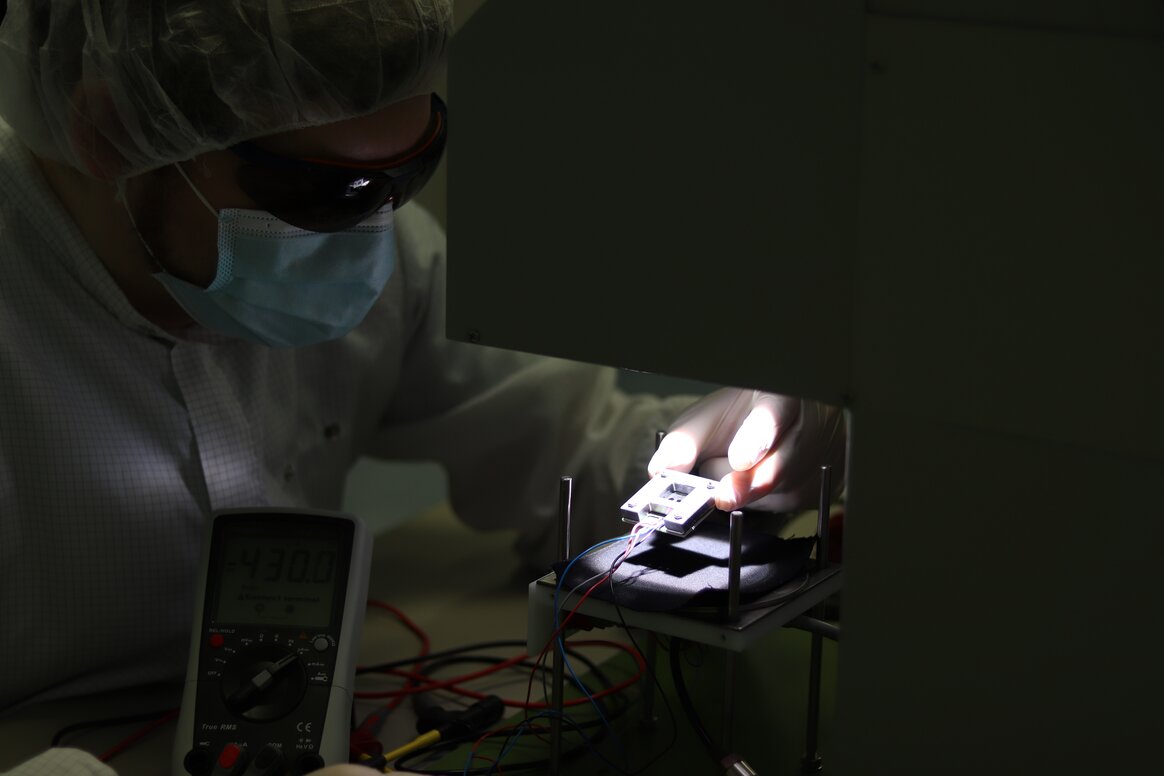
Researchers from the University of Wuppertal in Germany have achieved a breakthrough with next-generation tandem solar cells reaching a new efficiency record. The work has recently been published in the renowned science journal Nature.
Established photovoltaic technologies are based on silicon and they have reached their final stages of optimization; spectacular improvements of their efficiency (i.e. how many Watts of electrical power you get per Watt of incident solar power) are unlikely. At best one can hope for a further decline in costs, which would improve the figure of merit, that tells you how many Watts of electrical power you get per Euro of module costs. The latter typically involves either subsidies and/or lowered environmental standards for the production.
As such, the development of novel solar technologies, that carry the potential to overcome the above limitations and to make a notable contribution in the transition to renewable energies, is desperately needed. “In our group, we consider organic materials as well as perovskite semiconductors instead of silicon. Both technologies have shown a skyrocketing development in recent years and their efficiencies now rival even that of silicon. At the same time, these technologies require substantially less material and energy in production, which renders then more sustainable with short energy payback times”, explains Prof. Riedl, Chair of Electronic Devices und Director of the Wuppertal Center for Smart Materials & Systems at the University of Wuppertal in Germany.

“It gets even more exciting if you match both organic and perovskite solar cells in what is called a tandem cell”, says Kai Brinkmann, who is working towards his PhD in the group of Prof. Riedl. He continues: “One needs to recall that sunlight is a mix of various spectral components (colors); just imagine a rainbow or a prism, that is able to decompose the white sunlight into its spectral components – all the way from the lower energetic red to the higher energetic violet parts. Now, a fundamental limit of solar cells is linked to the trade-off that the cell either does not absorb a notable part of these spectral components or it converts a significant part of the absorbed solar energy to heat rather than electrical energy.” Tandem cells, where two different solar cells that can take care of separate parts of the solar spectrum are hooked up in series, offer an avenue to beat this dilemma. “The key to success is the so-called ‘interconnect’, that connects both cells electrically and optically.
As a rule of thumb, you can say: ‘the thinner the interconnect the better’”, explains Tim Becker, who has specialized on these interconnects as a PhD student in the group of Prof. Riedl. “To keep the losses as low as they can possibly be, we use ultra-thin layers of indium oxide as interconnect. With a thickness of only 1.5 nanometers it is so thin, one could be tempted to get to know every single atom in the layer personally”, says Becker. The enabling technology behind all this is atomic layer deposition, a coating technology the group of Prof. Riedl has been researching for several years. “A major part of the success is the network of partners, specifically from the Universities of Cologne, Potsdam, Tübingen, the Helmholtz Center in Berlin, and the Max Planck Institut für Eisenforschung in Düsseldorf, whose broad expertise helped to remove critical roadblocks on the way that finally led us to perovskite/organic tandem solar cells with an efficiency of 24 per cent – a new world record for this kind of tandem! The close collaboration and the funding within the priority programme of the Deutsche Forschungsgemeinschaft (DFG) on perovskite semiconductors (SPP 2196) were of particular importance”, says Riedl.
Brinkmann does not plan to rest on laurels: “At the time we started this project, perovskite/organic tandems were just around 20 per cent efficient. We are now at 24 per cent and simulations show that our concept should allow us to reach efficiencies even beyond 30 per cent.” These efficiency levels are nowadays found only in solar cells that are used in space applications, such as in the recently deployed Mars drone ‘Ingenuity’. Prof. Riedl: “Different to here on earth, for space applications high efficiency and low weight are more important than the costs. Our work hopefully contributes to a scenario where solar cells with similarly high efficiencies but at a fraction of the costs will become available for terrestrial use.”
Filling electrolytes into battery cells is a critical step in battery manufacturing. Small dispensing errors cause large variations in battery …
Anodic Arc Evaporation: A Key Enabler for Next-Generation Photovoltaics: The EU-funded LUMINOSITY project unites 15 research and industry partners from …
Cancer diagnostics is at a turning point: new technologies are fundamentally changing how we recognize, understand and treat diseases. This …